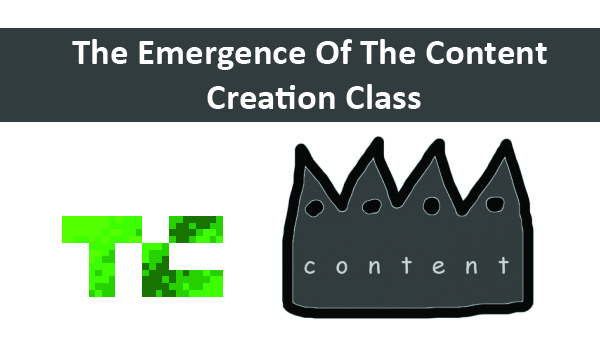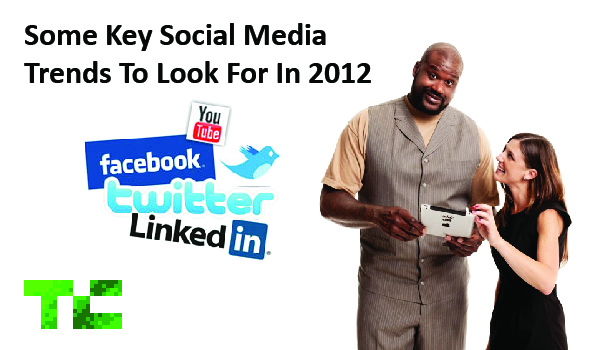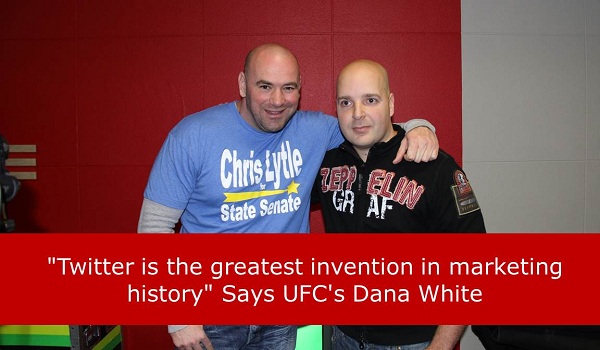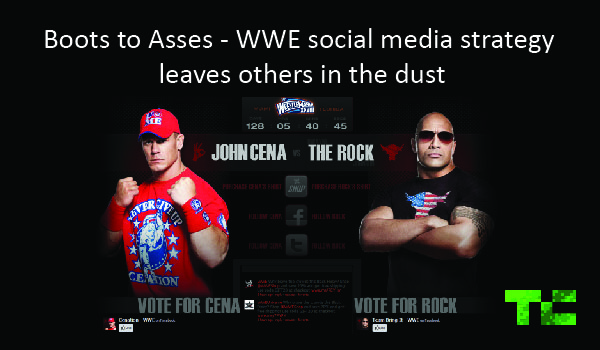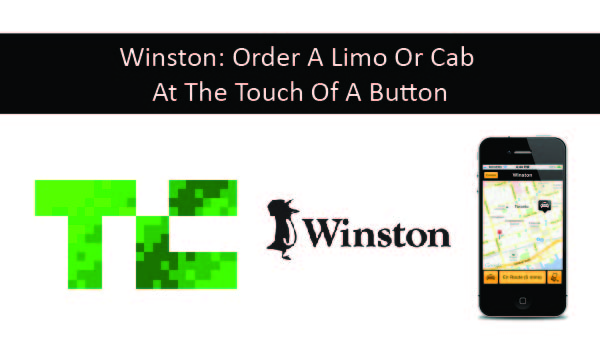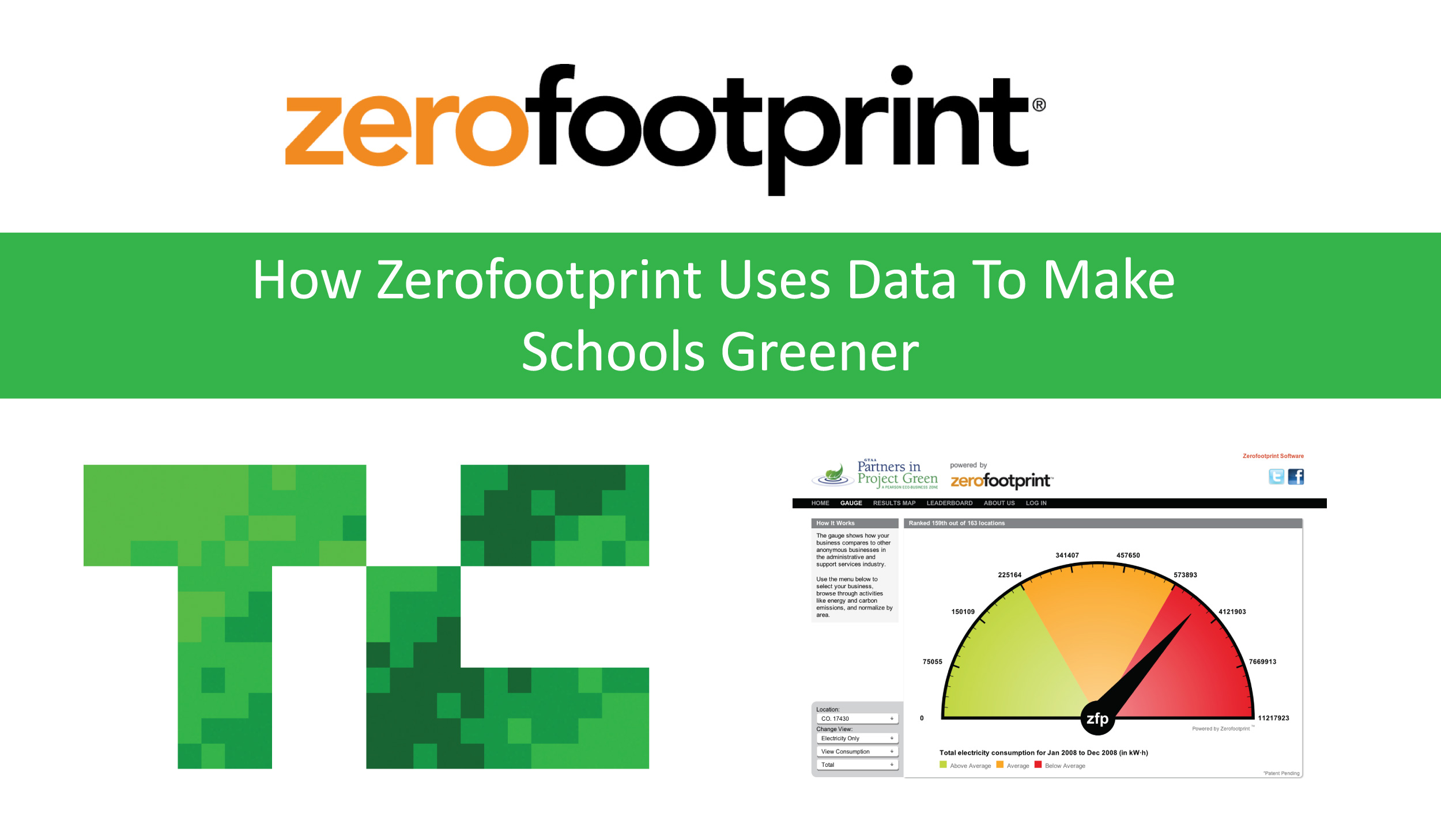The content creation class shall inherit the Internet. Richard Florida coined the expression the “Creative Class”, his belief being that these some 30 to 40 million would be the driving force for economic development in a postindustrial world. Instead of driving the macro economy the Content Creation Class refers to the group of people who drive content on the internet those that write blogs, those that upload video to YouTube, and those that upload pictures to share with the world. The Internet is a key segment within this postindustrial world identified by Florida. Since the emergence of Webernets, two distinct classes that have emerged — those that create content and those who consume it. For every content creator there are far more individuals that consume content. Like other class systems, there are inherent advantages or disadvantages with each class. While content creators have had their share of benefits, the concept of mass content creation also comes with its own risks. The rise of the content creation class Content creators have enjoyed advantages over content consumers since the dawn of the internet. They enjoy higher amounts of influence; they have the potential to earn more money and fame. The only prerequisite to be part of this class is to create content; you do not need to be creative, correct or even factual. Bloggers are a great example of this — some blog just for blogging’s sake, while others have made it into a career or in some cases a successful business. Whether it is through paid promotion, advertisement or Google Adwords, people make thousands or tens of thousands of dollars monthly creating content on their blog. This system is has been used and abused by paid bloggers and those looking to bend the Google algorithm to their will to bend a torrent of traffic to their respective site. Thin content is a common problem, and parasitic to the Internet as a whole. It is still however, a part of content on the web, good or bad. Filling the content vacuum The content vacuum requires new content and it doesn’t seem to matter what it is. People will consume it. This isn’t to say that the better content won’t command more eyes, but even bad content will find viewers. This is another key differentiation between the creative class, you don’t need to necessarily be creative or factually correct to create information on the Internet. The reality is those that create either good or bad content will still see a benefit from it. A prime example is YouTube, there is tons of questionable videos that garner hundreds of thousands of views. As eyes continue to shift...
Read MoreIn 2011, social media had its share of growing pains. Large brands and corporations took to social media in force to try to find footing in this expanding medium. Some brands found success, while others found peril and new PR nightmares. One person who has helped brands navigate the proverbial social media minefield is Amy Jo Martin. She is the founder of Digital Royalty, a social media firm that has set itself apart by helping A-listers find their social media voice. Amy works with people like Dana White of the UFC, Dwayne “The Rock” Johnson of acting/WWE fame and brands like Nike and Fox Sports (and now Joel Stein). Her specialty is working with organizations or individuals and making them look good online. Since the online world is in perpetual flux, I wanted to get Amy’s take on the social media landscape for 2012. Here were a few key trends Amy said we should look out for in 2012: 1. Social TV Integration Many shows have already begun to integrate social TV, either through polling or integrating social elements within the show. See my example of how both the UFC and WWE are integrating social media into their programming. Social media played a pivotal role in the last presidential election, and it will likely be more integrated into political broadcasts. As each news channel fights hard to keep their viewers engaged, networks like CNN and Fox have made significant strides to engage their audience, although some would argue that this social media integration has come at the expense of hard-hitting journalism and analysis. 2. TV Is Going Online in a Big Way 2012 will be the first time that the Super Bowl will be streamed live to the world. Since the Super Bowl is generally viewed as the mother of all advertising spectacles, it will add a new dynamic into the digital component to advertising and social media integration. 3. Facebook Credits Take Center stage Facebook in 2012 has the potential to project its power and truly take Facebook credits into a viable currency. Amy puts it quite well when she says “they’re building an online destination we’ll never need to leave, and my guess is they’re only about 8% of the way through their product roadmap.” 4. Big Business Has Woken Up The way corporate entities approach social media is shifting. Many companies realize that setting up Twitter, YouTube and Facebook accounts is not going to cut it as their social media strategy. Brands will need to seriously shift their perspective by treating social channels more like communication channels and less like an advertising channels in order to make a difference. From my perspective...
Read MoreI got to sit down and interview Dana White ahead of UFC 140. The event takes place on December 10th in Toronto, Canada and like every UFC event, heavily hyped via social media. Over the past 3 years, Dana White and the UFC have built a very strong social media presence. I wanted to speak to the head of the UFC himself and get some more detail on what he thinks of Twitter and other social media tools. Dana goes on to outline how he got into Twitter, how he uses it to help his business, what are the pitfalls and benefits. Amy Jo Martin of Digital Royalty, who helps build social media strategies for business such as the UFC had this to say about Dana White and his use of Twitter. “Dana White was the first sports executive to see the power of these new communication channels. From day one, Dana and the UFC have treated social media channels as a dialogue vs. a monologue.” Digital Royalty...
Read MoreOver the past year the WWE has continued to push the social media envelope by integrating Twitter and Facebook further into its regular broadcasts. Dwayne “The Rock” Johnson, now a cross-over star in both the WWE and Hollywood, cut a promo on WWE Raw to hype the upcoming pay-per-view “Survivor Series”. During that promo, the Rock quickly coined a new catchphrase “Boots to Asses” and said it was now trending worldwide. Before he mentioned it there was no mention of it on Twitter. Shortly after he said it, not only did it start a new chant throughout the arena, but it proved that Mr. Johnson was prophetic as minutes later the term “Boots to Asses” was trending worldwide. One might say this is a one off, but for anyone observing what the WWE has been up to this can be seen as only a small part of a much larger social media strategy. In the last year, the WWE has bolstered it’s already strong web presence with a very savvy social media offensive. Now every performer who appears on WWE TV has their own Twitter handle which they use to build a fan following and actually continue storylines started from the show. During the broadcast, whenever a wrestler heads to the ring, their Twitter handle is prominently featured next to their name on the screen graphics. Their strategy is obvious and effective, providing a method to allow their show to be more interactive and leverage casual fans to tune in more regularly especially when something eventful is on the screen. Throughout the show, it is quite common to hear announcers talking about whether something is trending worldwide. Some wrestlers who are trying to increase their standing in the company have actually taken to social media to build an audience. Zack Ryder and his self-styled ”Jersey Shore” persona created a series of YouTube videos to drive interest. To his credit, not only has he been successful driving nearly 100,000 people to become subscribers on Youtube, but he also has 300,000 followers on Twitter. He essentially went out and built a new fanbase for himself and received more airtime and interest as a result. Wrestlemania is by far the biggest event held by the WWE. To hype the main event, they have already launched a separate site to highlight their main fight, John Cena vs. Dwanye “The Rock” Johnson, and to encourage fans to choose whose side they’re on. The site is integrated with both Twitter and Facebook pages. On each side they have attracted huge audiences. Here is the tale of the tape so far, and it is pretty impressive. Dwayne “The Rock” Johnson John Cena Twitter Followers 1.6m...
Read MoreHave you been waiting for a taxi to come take you to an airport and it never comes? Or worse yet, you have ordered a car and don’t know where it is. A Toronto based company named Winston aims to change the way you call for a taxi or limo. Launching today exclusively in Toronto, Winston is going direct to cab or car companies and pitching a different way to operate. Instead of high overhead dispatch, which can be hit and miss they are leveraging the customer, GPS and integrated credit card functions to change the game. Sounds a lot like Uber, but Winston’s prime focus is around the business user. The business traveler typically has very different needs than an average traveler. The launch of the app is currently limited to Toronto, Canada, but they will be rolled out in New York, Chicago, Los Angeles and San Francisco by the end of the year. Winston is negotiating agreements currently with international providers and will be in multiple markets in Europe and Asia in 2012. Winston believes it will win out by leveraging broader distribution and greater adoption across more cities. Uber is currently available in 5 cities. “Our customers will be everywhere, we need to be everywhere they are” says Aidan Nulman CEO of Winston. With Winston, rather than picking up the phone, you will be able to order a cab at the touch of a button using the Winston app. While waiting for your ride you can track it approaching via GPS. When you complete your ride, rather than having to reach for your wallet, you just leave the car and the payment is handled via Winston. The payment is tracked via the app, it tracks the pick-up and drop-off location and time spent and charges a credit card on file appropriately. Whether you want either a cab or a limo, a prospective passenger can order either. Limousines obviously come at a premium and a minimum cost of 50 dollars. Winston has already negotiated numerous agreements with cab and limousine companies. Winston has received significant interest from corporations looking to manage employee expenses. One of the key reasons for this is that tax chits can often be abused by employees while traveling. As well, for employees, keeping track of travel expenses is often the last thing they want to do. All in all, this is ideal for a busy business traveler who is getting off a flight to catch a business meeting. This expedites and automates the entire process. Winston derives revenue by taking a percentage of each ride and sees many other potential revenue streams. Winston was founded In January...
Read Morehe word “green” is tossed around a lot as a catchall term to describe sustainable or environmentally friendly projects, businesses, energy, and more. Green construction and architecture, for one, are proliferating across the world, but when it comes to gauging how “green” a building is, for example, one finds that there are more than a few standards by which to determine its efficiency and sustainability. Enter Toronto-based Zerofootprint: A cleantech software and services company, which is leveraging competitive benchmarking between peers to help determine the “green” factor for any given building. Ron Dembo, the founder of Zerofootprint, contends that, if you want to motivate developers to improve the efficiency of a building, one can’t simply benchmark against everyone else, because each community has a different climate. Thus, the founder says that Zerofootprint aims to focus on benchmarking buildings against other buildings within a community to achieve maximum community efficiency. Zerofootprint uses its mapping and analytics engine to correlate multiple consumption and usage data points, like power usage, costs, emissions, etc., that it then plots on an interactive map for easy viewing. Currently, the company is working with over 100 customers that include entities like school boards and municipalities, and is leveraging its data in school districts to drive change at a school-by-school level. By tracking power usage at this local level, Zerofootprint is quickly able to see which schools are using higher amounts of power and thus incurring a higher cost. Through some quick analysis, it’s able to track and see that a school board may be paying $2,500 per child in electricity vs. $800 in another school, for example. Some of these differences can be traced to age of the building, but another key component is behavior. By sharing this information with key stakeholders (including students, teachers, parents and administrators), the schools can then work to reduce energy costs. It is the hope that by reducing energy costs, school districts can focus on using those funds towards education instead of just keeping the lights on. According to Dembo, through realtime feedback with its system, Zerofootprint has already been able to help certain schools achieve 20 percent energy reduction. He also says that it’s been interesting to see the reaction from stakeholders for installations that have not even taken root. Zerofootprint has recently deployed their solution with the Halton Catholic District School board. “Even in the early stages of this initiative, teachers and principals are excited about using the Zerofootprint tool to engage students and encourage behavioral change when it comes to energy use in our schools. Our Board looks forward to using this tool to track carbon emissions and...
Read More